Tom's Guide Verdict
The Asus ZenFone 4 Max is one of the longest-lasting budget phones available, but a dated design and user interface keep it from standing out.
Pros
- +
Long-lasting battery
- +
Fun wide-angle camera
- +
Solid value
Cons
- -
Boring design
- -
Clunky software
- -
Middling display
Why you can trust Tom's Guide
If you're looking for the best processor, design or display in a smartphone, it's usually going to cost you. But if all you want is great battery life, you don't actually need to spend much. Some of the best cheap phones now ship with big batteries, while still managing to come in well under the $300 mark. Asus' latest, the ZenFone 4 Max, is another to add to the list.
The questionably named ZenFone 4 Max is actually the entry point of the ZenFone 4 family. It sets itself apart with a massive, 5,000mAh battery, rivaling the likes of the long-lasting Moto E4 Plus and LG X Charge. It also delivers dual cameras and a massive, 5.5-inch display, while costing only $199.
So what's the catch? Outside of that battery, Asus' big budget-bruiser is fraught with compromises. Even at that low price, you can do better.
Price and availability
The ZenFone 4 Max is available for $199 unlocked. In the U.S., the phone works only with GSM carriers, including T-Mobile, AT&T and MetroPCS. Asus has confirmed that all products in the ZenFone 4 family, including the Max, will eventually get Android 8.0 Oreo.
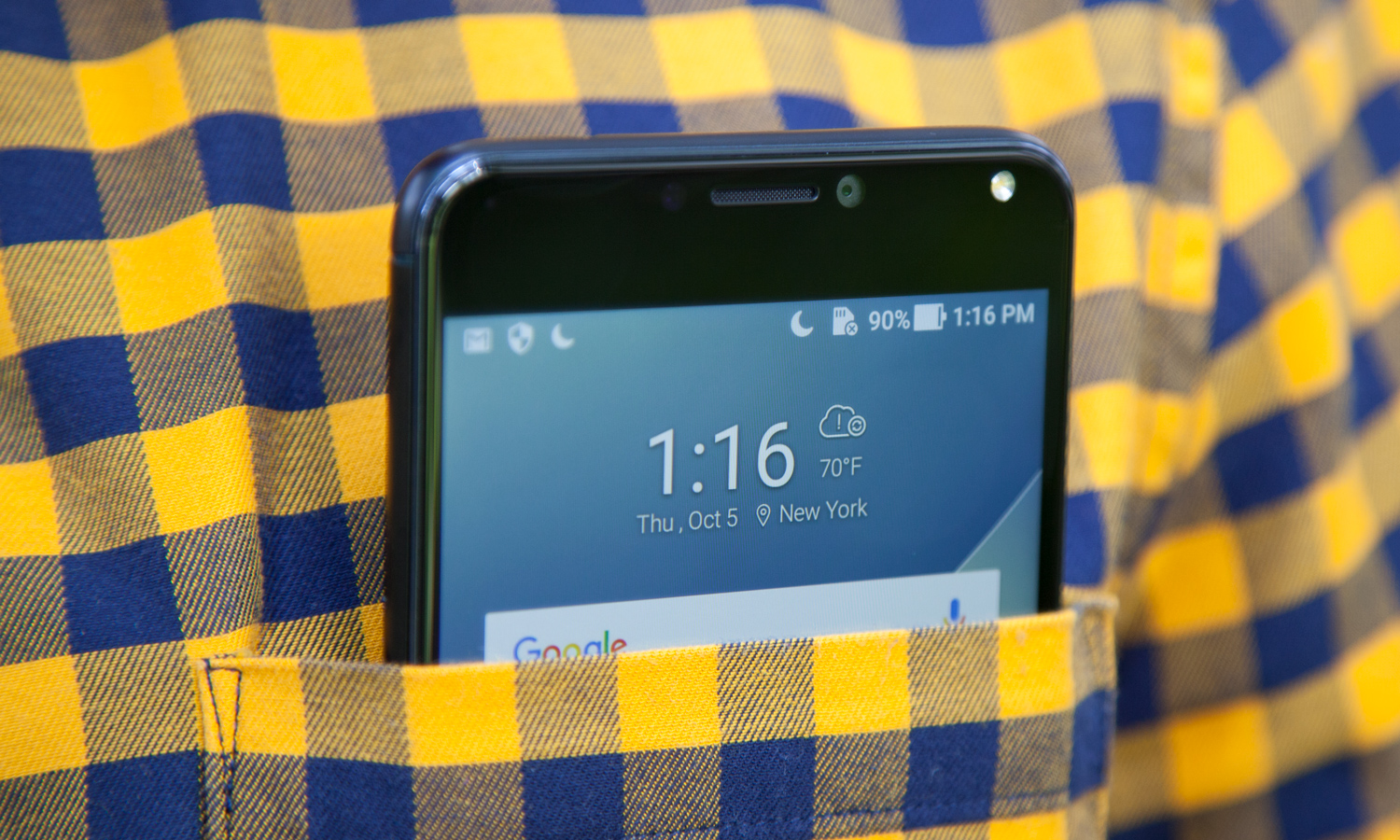
Speaking of carriers, the ZenFone 4 Max is one of a few new phones stateside launching with dual SIM capability. You can have service active on both SIM cards simultaneously, but only one at a time can utilize LTE data. The tray also includes a microSD slot, supporting cards of up to 256GB for additional storage.
Battery: Asus does it again
If you're interested in the ZenFone 4 Max, the battery is probably the reason why. Asus has shown prowess in this department, with the company's ZenFone 3 Zoom currently ranking as the longest-lasting smartphone we've ever tested. So how does the newcomer compare?
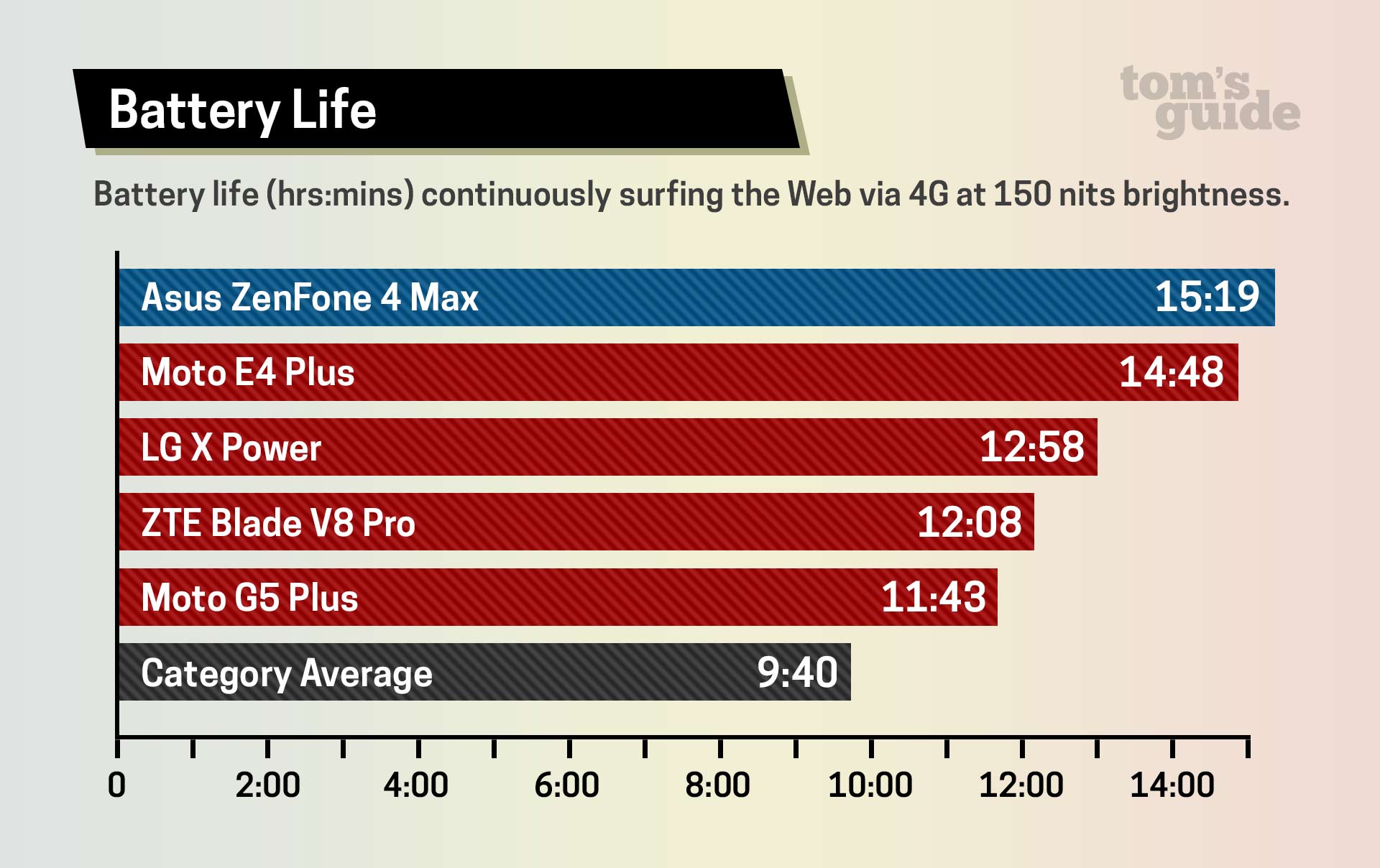
The ZenFone 4 Max uses an identically sized 5,000-mAh battery as the ZenFone 3 Zoom and lasted an epic 15 hours and 19 minutes on our Tom's Guide Battery Test, which consists of continuous web surfing over T-Mobile's LTE network. That's exactly an hour and a half shorter than the ZenFone 3 Zoom, though 31 minutes longer than the long-lasting Moto E4 Plus.
More than 15 hours of battery life is nothing to sneeze at, not when the average smartphone lasts 9:40 on our test. And the ZenFone 4 Max costs $130 less than the ZenFone 3 Zoom, which is not a bad trade-off for budget-minded smartphone shoppers.
The ZenFone 4 Max lasted an epic 15 hours and 19 minutes on the Tom's Guide Battery Test.
The ZenFone 4 Max has some other battery tricks up its sleeve, too. The included PowerMaster app provides tools and diagnostics to squeeze even more longevity out of a charge while monitoring battery health. The phone allows for reverse charging through a packaged USB on-the-go cable, meaning you can top off your headphones, smartwatch or other mobile device using the ZenFone as an external power pack.
MORE: Smartphones with the Longest Battery Life
Asus has thrown in an optional setting that the company claims will slow the battery's degradation over time, doubling its life span. However, when you turn on this feature, Asus warns that it will diminish the device's battery life per charge. The ZenFone 4 Max also supports fast charging exclusively through the stock adapter, providing 3 hours of talk time in 15 minutes.
Design: Dated, even for a budget phone
As impressive as its battery is, the ZenFone 4 Max is as visually forgettable as Android phones come. If looking only at the front, you could mistake this phone for so many other large, unassuming slabs of metal and glass. With big bezels, a rectangular fingerprint sensor/home button and mirrored capacitive navigation keys, this Asus handset could have been built by any company, at any point in the last five years. It's almost offensively boring.
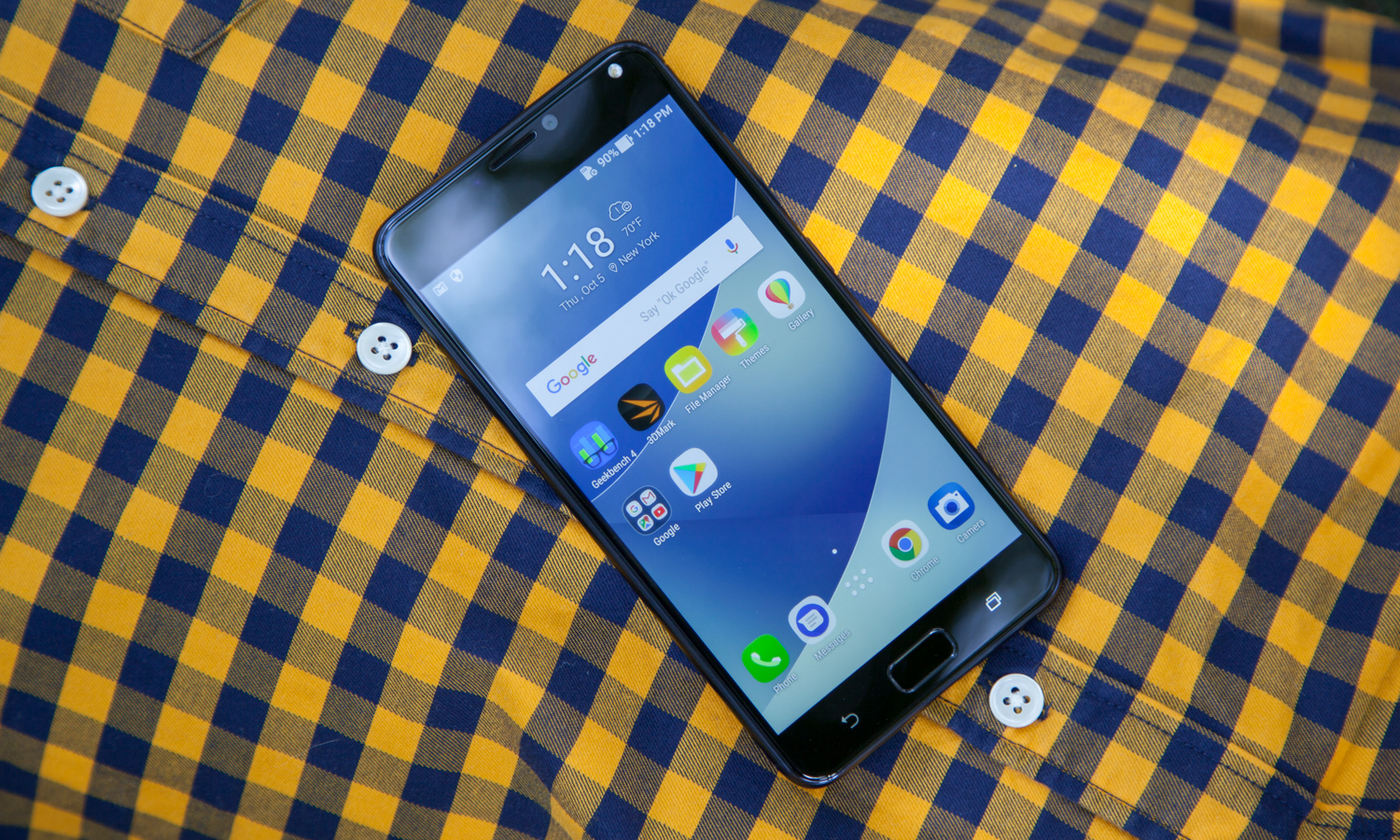
Turn the phone over, and things brighten up a bit. The ZenFone 4 Max is made predominantly of metal, and the backside is a clean hunk of aluminum with breaks near the top and bottom. On our almost-blue Deepsea Black unit, these strips are a lighter, glossier shade of indigo and are recessed beneath the metal. It's a nice effect that provides a much-needed dash of personality.
With big bezels, a rectangular fingerprint sensor/home button and mirrored capacitive navigation keys, this Asus is almost offensively boring.
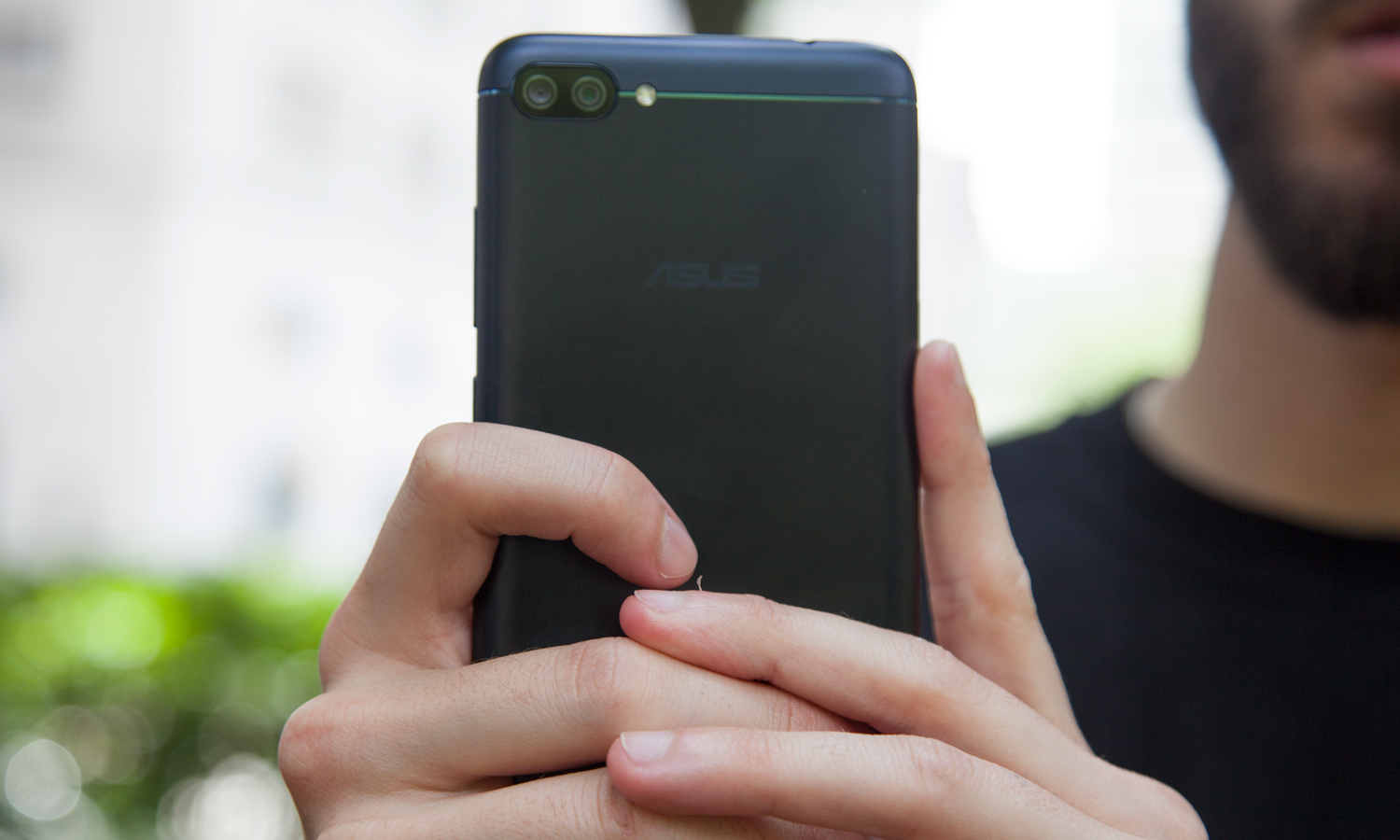
The ZenFone 4 Max doesn't simply look old; it also feels old, mostly because of how hefty it is. At 6.4 ounces and 9 millimeters thick, the device is a bit more cumbersome than the Moto G5 Plus, which is 5.5 ounces and 7.7 millimeters thick. Asus needed to stuff that bulky battery somewhere, and that dilemma wasn't lost on me as I held the phone. Equally dated is the inclusion of a microUSB port, rather than the newer, multipurpose USB Type-C standard.
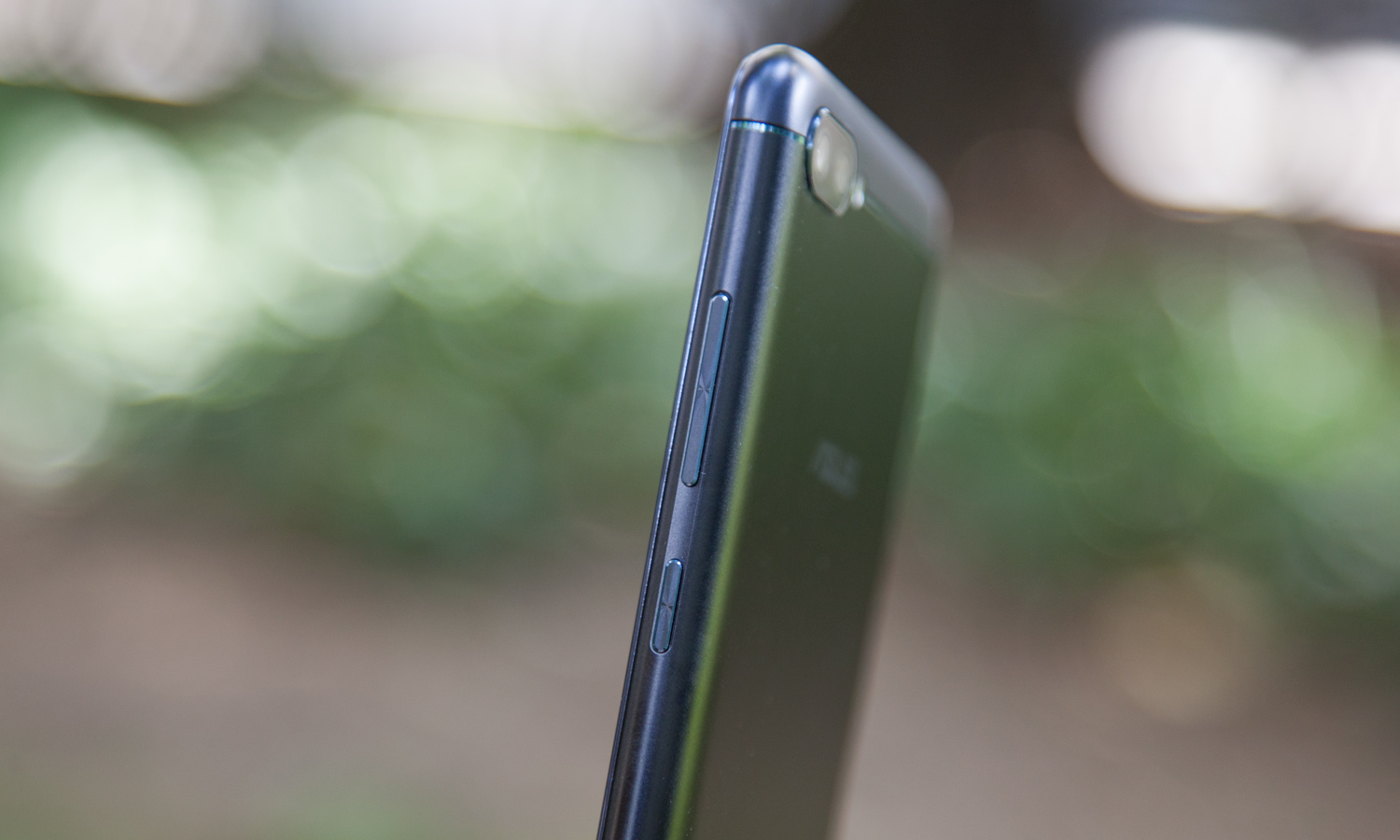
Asus ZenFone 4 Max Specs
| Price | $199 |
| OS | Android Nougat 7.1.1 |
| Screen Size (Resolution) | 5.5 inches (1280 x 720) |
| Size | 154 x 76.9 x 8.9 mm (6.06 x 3.03 x 0.35 inches) |
| Weight | 181 grams (6.4 ounces) |
| CPU | Snapdragon 430 |
| RAM | 3GB |
| Storage | 32GB |
| microSD? | Yes |
| Rear Camera | 13-MP (main camera); 5-MP (wide-angle) |
| Front Camera | 8-MP |
| Battery Life (Hrs:Mins) | 15:19 |
Display: A mediocre but bright display
Like many other phones at this price range, the ZenFone 4 Max features a 720p LCD display. This one is 5.5 inches large and, unsurprisingly, looks quite blurry at that size.
As a result, this is a mediocre display, even for a budget phone. When I watched the trailer for Blade Runner 2049, the panel exhibited a slightly cool tint and was a little washed-out overall. Viewing at off-center angles produces a noticeable color shift, and the low resolution makes it impossible to ignore some of the jagged edges around certain aspects of the user interface.
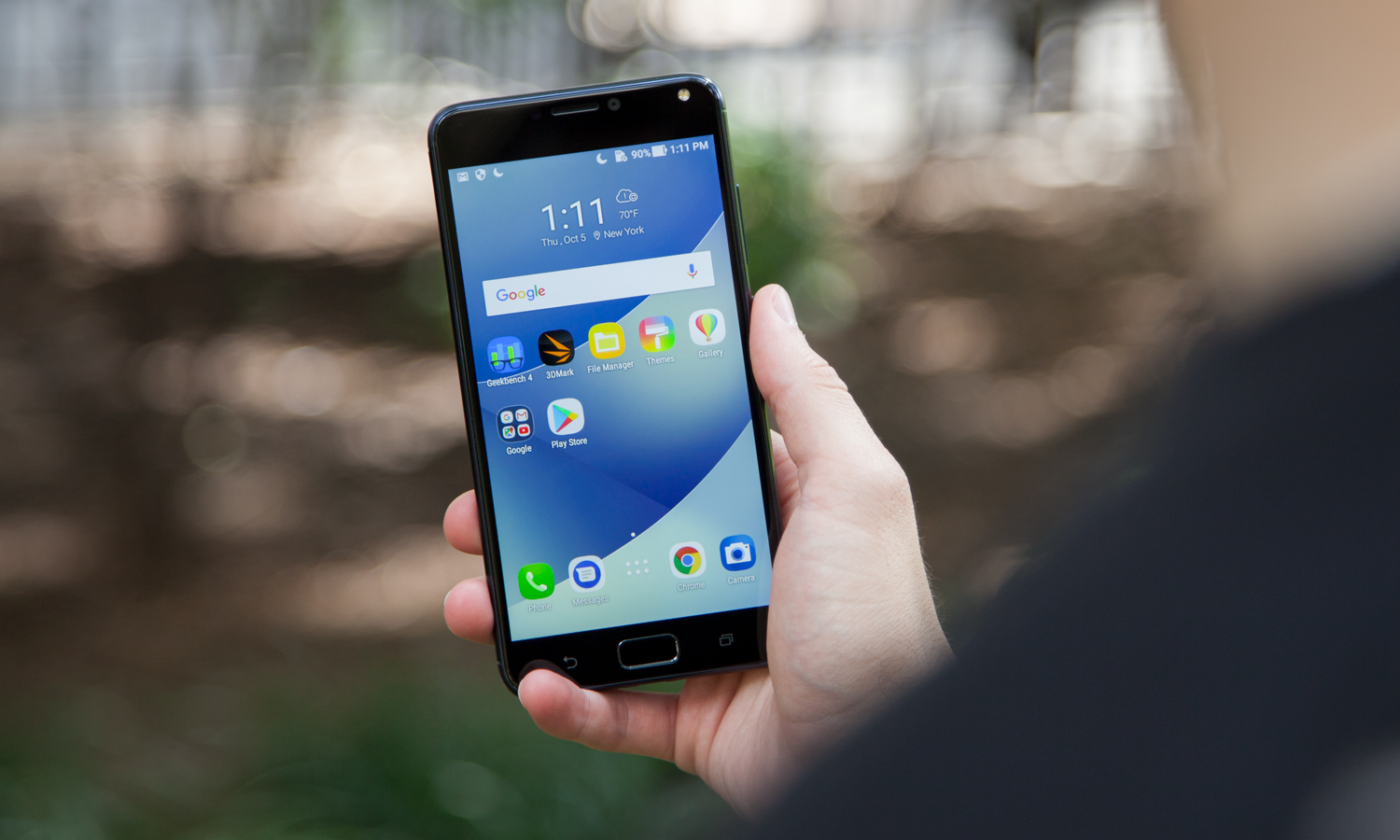
On paper, results were similarly mixed. The ZenFone 4 Max replicates 103.6 percent of the sRGB color gamut, a result that pales in comparison to that of the Moto E4 Plus and its LCD screen, at 125 percent. However, ZenFone 4 Max's color accuracy is on par with that of the best smartphones, as this device registered a Delta-E rating of 0.30. (Numbers closer to 0 are better.) The Motorola barely edges the Max out, at 0.27.
MORE: The Best Cheap Unlocked Smartphones
Fortunately, the ZenFone's display also gets pretty bright. The ZenFone 4 Max delivered a peak brightness of 461 nits, comfortably surpassing the 433-nit average. This may not be the best panel we've seen in this highly competitive segment, but the ZenFone's screen has its advantages.
Camera: A different take on dual lenses
Toting dual cameras is nice, but it's what you do with them that really matters. Asus has taken this lesson to heart with the ZenFone 4 Max, providing the camera with two lenses: one 13-megapixel shooter with an f/2.0 aperture and electronic image stabilization, and a wide-angle lens with a 120-degree field-of-view, rated at 5-MP.
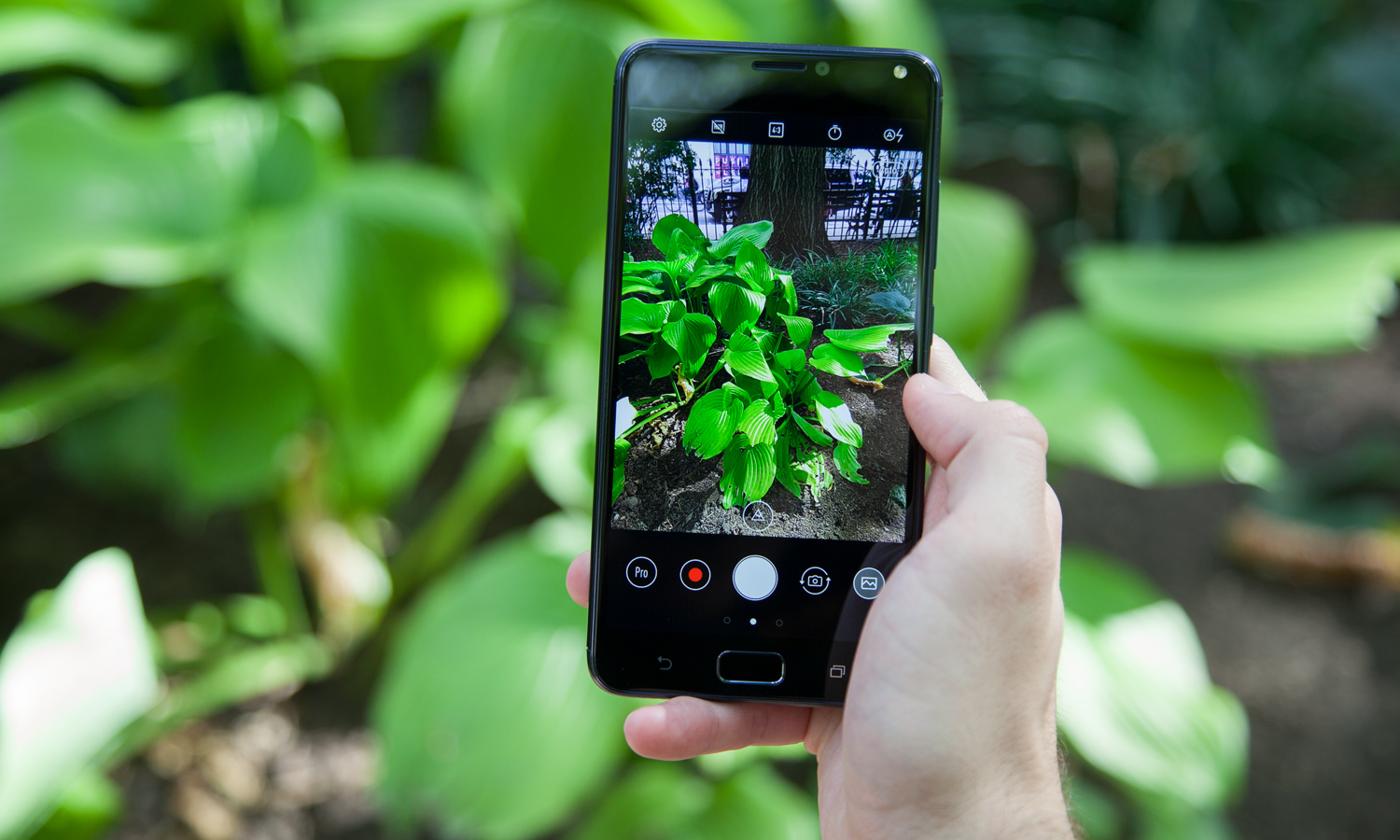
The ZenFone 4 Max doesn't use its dual cameras to enable portrait-style photos with blurred backgrounds in the vein of the Moto G5S Plus. Instead, it allows you to change on the fly between the standard and wide-angle lenses, similar to what you can do on the more expensive LG G6. Switching between camera lenses on the ZenFone is easy, thanks to a toggle located right above the shutter button. It is quick, though perhaps not as instantaneous as Asus advertises.
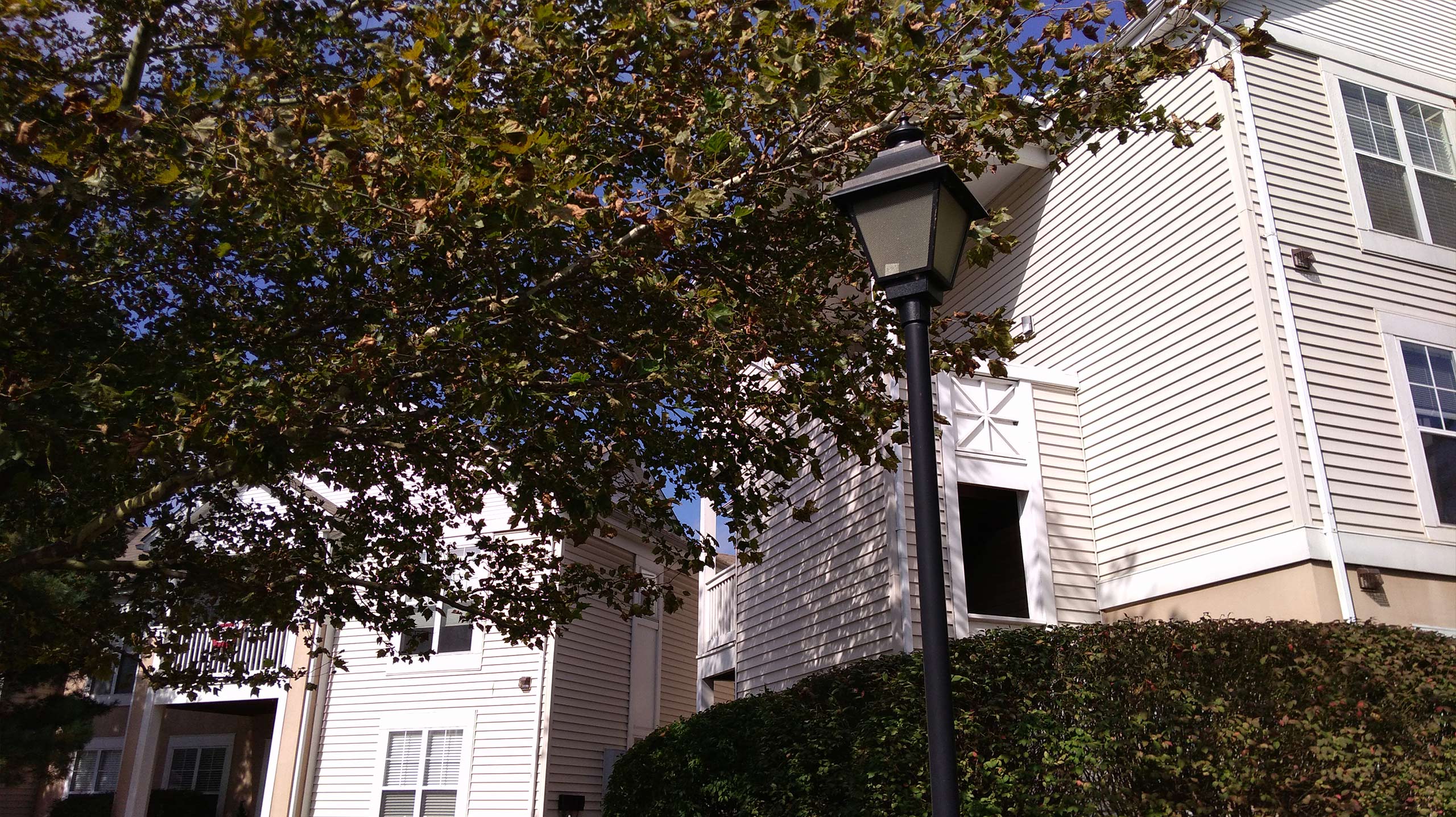
You'd figure the difference in megapixels would harm the image quality of that wide-angle lens, and you'd be right. Photos taken with this camera match the punchy colors of the primary one but exhibit a significant drop in clarity. You can't zoom in as far — the phone physically won't let you — and if you could, you'd only be presented with a muddy pastiche of pixels.

Thankfully, the standard lens is a more consistent performer. Like so many other solid budget-phone cameras, the ZenFone's rear shooter won't let you down on a sunny day. It's relatively speedy to focus, and it captures photos quickly, so long as the scene is well-lit. Snapping a bunch of exposures in quick succession can slow the camera down, causing the app to hang for a second or two, but this wasn't the case in most scenarios. The HDR results were typical — which is to say, your mileage will vary depending on the scene.
In this shot of a dreary afternoon in New York, we see how the ZenFone 4 Max's camera compares to the $229 ZTE Blade V8 Pro's 13-MP shooter. Right away, you'll notice the greens in the ZTE shot pop, while the Asus did a better job of bringing out the red in the stone and brick. However, the ZenFone heavily blurred the left edge of the frame, while the Blade V8 Pro managed a crisp exposure throughout.
Asus has included a wealth of shooting modes with the ZenFone 4 Max, including a Pro interface with a suite of manual controls and a Panorama option. But we'll focus on two: Super Resolution and Beauty.
Super Resolution mode almost works like HDR, in that it takes multiple exposures and combines them with post-processing. The result is one 52-MP image that is unquestionably more detailed than what you'd achieve normally, though whether it's necessarily better is a matter of taste. In the comparison below, we see that while the Super Resolution shot is crisper, it lacks the depth of field present in the same shot using Auto mode.
Beauty mode softens skin tone and diminishes blemishes and can be used on both the front and rear cameras. I tested it with the 8-MP selfie cam, and although it certainly smoothed things over, the final product is almost alien-like (not to mention, much warmer).
Performance: Great if you don't game
The ZenFone 4 Max is powered by a Qualcomm Snapdragon 430 chipset that's tuned for efficiency rather than speed. It comes with 3GB of RAM and 32GB of internal storage. That's not necessarily class-leading for the money, but it is pretty good. The $200 Huawei Honor 6X beats it with a more powerful processor, while the base $180 configuration of the Moto E4 Plus is inferior in all three categories.
So we weren't surprised to find Asus' hardware outperform Motorola's in testing. The ZenFone 4 Max produced a score of 2,528 in Geekbench 4, which measures overall performance. When our attention turned to 3D graphics crunching, the phone delivered a 3D Mark Ice Storm Unlimited result of 9,506. The Moto E4 Plus managed scores of only 1,891 and 6,646, respectively.
MORE: Best Smartphones on the Market Now
We drove a few laps in a pair of pocket racing games to see how those numbers translated to the world of actual gaming. Real Racing 3 performed smoothly enough, with the phone's Adreno 505 GPU keeping the action moving at a reasonable clip with responsive controls. However, the handset didn't handle the newer Asphalt Nitro as well, and a chuggy frame rate made the experience frustrating.
If you stay away from demanding apps, the ZenFone 4 Max is a competent performer. Exploring the world in Google Maps, streaming video in YouTube and juggling tabs in Chrome didn't slow the phone down.
Software: A disappointing custom interface
Although the ZenFone 4 Max runs Android 7.1.1 Nougat out of the box, it also employs Asus' ZenUI custom interface, one of the more pronounced departures from Google's operating system out there. The company probably would have been better off simply leaving Android alone.
ZenUI feels like a step back — aesthetically and functionally. It's cluttered and convoluted, particularly when you reveal the mess of giant quick-toggles tucked in the notification shade. Text in the Settings menu as well as in a few of the system apps is unnecessarily big by default, and inconsistent throughout the interface. There are too many options for everything, and they don't always appear where you'd expect them. And although Asus generously provides a variety of themes to customize your home screen (for a fee), I haven't found a single one that didn't look gaudy or obnoxious.
ZenUI feels like a step back — aesthetically and functionally.
Maybe you'll prefer Asus' style. But when so much of Android was already fine as it was, ZenUI's modifications just come off as change for change's sake, without adding value.
Bottom Line
The cheapest ZenFone 4 is a perfectly serviceable smartphone with great battery life and dual cameras, all for $200. Unfortunately for Asus, other drawbacks make this phone difficult to recommend over the budget competition.
ZTE's $200 Blade V8 Pro also has dual cameras, but adds a portrait mode, a full-HD display and, most importantly, a much better processor. The $180 Moto E4 Plus edges the ZenFone 4 Max in price, but offers about the same battery life and a greatly improved software experience. And if you trade up to the slightly more expensive Moto G5 Plus, you'll have our favorite smartphone for under $250.
On paper, there's no doubt the ZenFone 4 Max packs solid value. If you're interested in long battery life or wide-angle photography, this phone is immediately worth consideration. But the performance and display are only adequate, and the design and software are positively drab. You could argue that no device at $200 is particularly glamorous, but the ZenFone 4 Max could desperately use a surprise or two.
Credit: Shaun Lucas/Tom's Guide
Adam Ismail is a staff writer at Jalopnik and previously worked on Tom's Guide covering smartphones, car tech and gaming. His love for all things mobile began with the original Motorola Droid; since then he’s owned a variety of Android and iOS-powered handsets, refusing to stay loyal to one platform. His work has also appeared on Digital Trends and GTPlanet. When he’s not fiddling with the latest devices, he’s at an indie pop show, recording a podcast or playing Sega Dreamcast.
-
a.tarantino1984 I completely disagree with this review. I saw this phone at Best Buy and I thought it looked absolutely gorgeous, and the build quality was very nice. No protruding camera is a pro for me, it has a much nicer designe than the Moto G5 variants. The camera itself is very fast, faster than the Moto G5 Plus (especially in burst mode). For $200 it’s a great deal. I can live with the changes to Android, pretty much every OEM does that so it’s expected these days. Plus I actually like the look of ZenUI, it reminds me of Samsung’s UI.Reply
